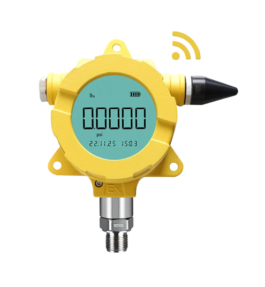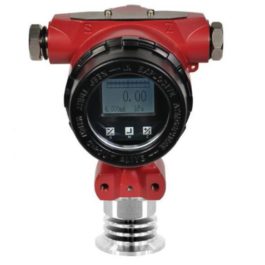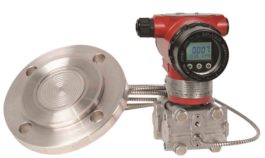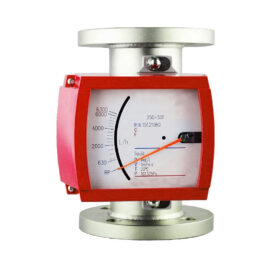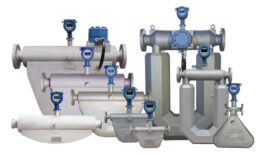The aerospace instrumentation industry encompasses a broad range of activities related to the design, development, manufacturing, operation, and maintenance of aircraft, spacecraft, and their associated components. Additionally, it plays a crucial role in various sectors such as defense, commercial aviation, space exploration, and satellite communications. Instrumentation, including flow, level, pressure, and temperature measurement devices, is vital in ensuring the efficient and safe operation of aerospace systems.
Instrumentation
Flow measurement instruments are used in aerospace instrumentation applications to monitor the flow of fluids, such as fuel and hydraulic fluids, within aircraft and spacecraft. Accurate flow measurement is essential for optimizing fuel consumption and system performance. It will also help ensure the proper operation of various components like engines, pumps, and valves. Also, in aerospace systems, flow sensors are used to detect any abnormal flow conditions, which could indicate leaks or other faulty conditions that may compromise safety.
Level measurement instruments are employed to determine the level of fluids, such as fuel and lubricants, in aerospace instrumentation systems. Additionally, this information is critical for the safe operation of aircraft and spacecraft, as it helps prevent overfilling, underfilling, or any other conditions that could adversely affect the performance and stability of these systems. Finally, accurate level measurement is essential for maintaining the balance, weight distribution, and stability of aerospace vehicles.
Pressure measurement plays a crucial role in the aerospace instrumentation industry by providing important information about the internal and external pressures experienced by different components and systems. Also, pressure sensors are widely used in aerospace applications to monitor parameters such as air pressure, fuel pressure, hydraulic pressure, and cabin pressure. Furthermore, these measurements are necessary for ensuring the safety and performance of various systems, such as engines, pneumatic systems, hydraulic systems, and environmental control systems.
Temperature measurement instruments are used to monitor and control temperature within aerospace instrumentation systems. Maintaining proper temperature ranges is crucial for the efficient operation and longevity of various components. Additionally, it also helps as well as for the comfort and safety of crew and passengers. Also, temperature sensors are extensively used in aerospace applications to measure parameters. Parameters such as ambient temperature, engine temperature, exhaust gas temperature, and internal temperature of various components. Accurate temperature measurement helps in detecting potential overheating, preventing thermal damage, and enabling optimal system performance.
Integration
In the aerospace instrumentation industry, the integration of flow, level, pressure, and temperature instrumentation allows for real-time monitoring, control, and optimization of critical parameters. Also, this integration is particularly important in ensuring the safety, reliability, and efficiency of aerospace systems. By providing accurate and timely information, these instruments enable operators and engineers to make informed decisions. Finally, It also helps diagnose problems and take appropriate actions.
Moreover, the advancements in sensor technology have led to the development of more reliable, accurate, and miniaturized instrumentation for aerospace instrumentation applications. For instance, the utilization of microelectromechanical systems (MEMS) technology has enabled the manufacture of small, low-power, and high-performance sensors. These sensors are capable of withstanding the harsh environments experienced in aerospace operations.
In conclusion, the aerospace industry relies heavily on instrumentation, including flow, level, pressure, and temperature measurement devices, to enhance the efficiency, safety, and reliability of its systems. Furthermore, these instruments enable real-time monitoring, control, and optimization of critical parameters, ensuring proper operation and preventing potentially catastrophic failures. Finally, as the industry continues to advance, the integration of advanced sensors and instrumentation will play an increasingly important role in pushing the boundaries of aerospace technology.
Aerospace Instrumentation:
Flow meters
Flow meters are used to measure the flow rate of fuel, hydraulic fluid, and other fluids in aircraft systems. Additionally, accurate flow measurement is crucial to maintain proper engine performance, and fuel efficiency, and to prevent engine damage due to fuel starvation or over-fueling.
Pumps
Pumps are used to move fluids through various systems in aircraft, such as fuel, hydraulic, and coolant systems. Accurate pump control is critical to ensure that the proper amount of fluid is delivered to each system and to prevent system overpressure or underpressure.
Pressure transmitters
Pressure transmitters are used to measure the pressure of fluids and gases in aircraft systems, such as fuel, hydraulic, and pneumatic systems. Moreover, accurate pressure measurement is crucial to ensure the safe and efficient operation of these systems, prevent leaks or system failures, and avoid damage to the aircraft.
Level transmitters
Level transmitters are used to measure the level of fluids in aircraft fuel tanks and other systems. Accurate level measurement is essential to ensure proper fuel management, prevent fuel starvation or over-fueling, and avoid damage to the aircraft.
Temperature transmitters
Temperature transmitters are used to measure the temperature of fluids and gases in various aircraft systems, such as engines, air conditioning, and hydraulic systems. Also, accurate temperature measurement is critical to prevent overheating, and system failures, and to ensure the safe and efficient operation of aircraft systems.
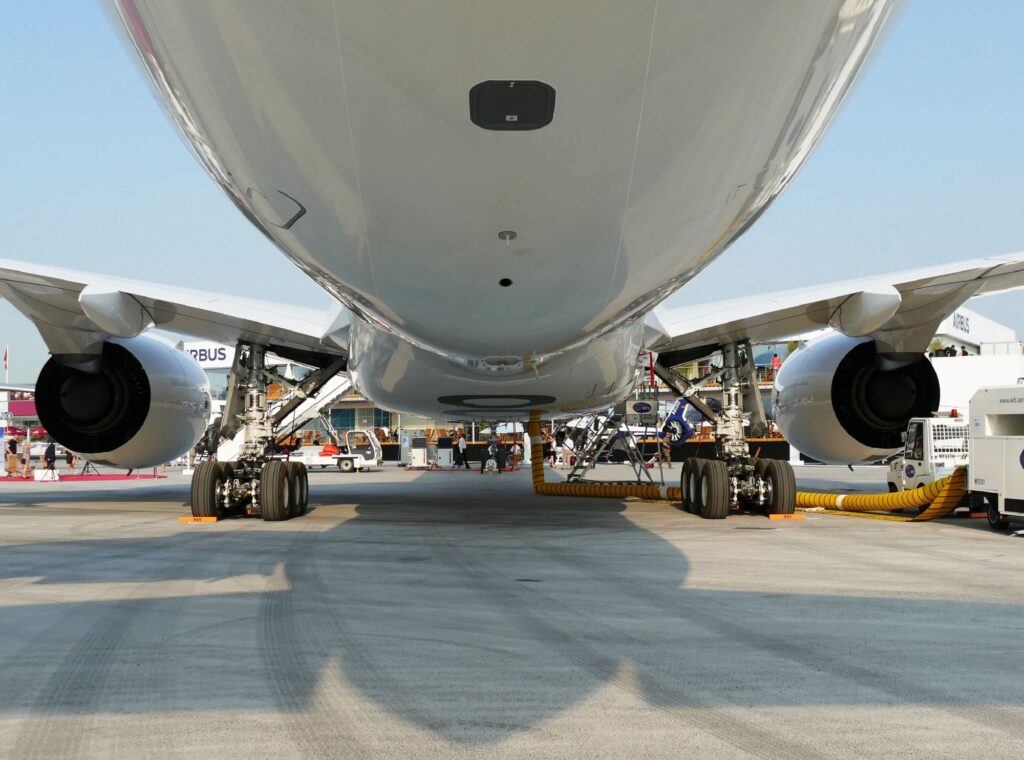
Advantages:
Improved Safety
Instrumentation plays a vital role in ensuring the safety of aerospace instrumentation systems. It helps by providing real-time monitoring and control of critical parameters. Additionally, it helps detect and prevent potential failures, malfunctions, leaks, and abnormal conditions, allowing for timely intervention and corrective actions.
Enhanced Performance
Accurate measurement and control of flow, level, pressure, and temperature parameters enable optimal system performance. Also, by closely monitoring and regulating these variables, aerospace instrumentation engineers can fine-tune processes. Finally, monitoring also helps reduce energy consumption and ensure efficient operation of various components, leading to improved overall performance.
Maintenance of Aerospace Instrumentation
Instrumentation in aerospace systems allows for proactive maintenance and condition monitoring. By continuously monitoring the health of components and systems, maintenance professionals can schedule preventive maintenance activities, detect early signs of degradation or failure, and reduce unplanned downtime. This leads to increased operational efficiency and cost savings.
Data-driven Decision Making
Instrumentation provides valuable data that can be analyzed to gain insights into the performance of aerospace instrumentation systems. By collecting and analyzing data from various sensors, engineers can identify trends, and make informed decisions. This also helps optimize processes and improve system design for future iterations.
Efficiency and Resource Optimization
Proper control and monitoring of flow, level, pressure, and temperature parameters enable efficient resource utilization. For example, precise monitoring of fuel flow helps optimize fuel consumption, reducing costs and environmental impact. Similarly, accurate level measurement allows for optimal use of oil and lubricants in systems, minimizing waste and enhancing efficiency.
Disadvantages
Complexity and Cost
The integration of advanced instrumentation systems in the aerospace industry can be complex and costly. High-performance sensors, data acquisition systems, and associated infrastructure require significant investment. Additionally, the installation and maintenance of instrumentation systems may incur additional costs and complexity.
Calibration and Maintenance
Instrumentation systems require periodic calibration and maintenance to ensure accurate and reliable measurements. This involves downtime, labor, and additional costs. Improper calibration or maintenance can compromise the accuracy and reliability of data, leading to potential safety risks or suboptimal performance.
Sensor Failure and Reliability
As with any electronic or mechanical device, sensors used in aerospace instrumentation are not immune to failures. Also, Sensor malfunctions or inaccuracies can impact the reliability and effectiveness of measurements. Malfunctions compromise the overall performance and safety of aerospace systems. Therefore, ensuring robust sensor design and redundancy measures are important to mitigate the risk of sensor failures.
Environmental Limitations
Aerospace systems operate in challenging and often extreme environments, such as high temperatures, pressure differentials, and vibration. These conditions can pose challenges for instrumentation reliability, accuracy, and longevity. Ensuring that sensors are designed to withstand and operate under such conditions is crucial.
Data Overload
While the availability of data from various instrumentation devices is advantageous, it also poses a challenge in terms of managing and analyzing large volumes of data. Processing and analyzing the vast amounts of data generated by multiple sensors require adequate computational power and advanced data analytics tools. Ensuring effective data management strategies is essential to derive meaningful insights from the collected data.
Overall, instrumentation brings numerous advantages to the aerospace instrumentation industry. They also present challenges related to complexity, cost, reliability, and data management. Proper planning, design, and maintenance practices are necessary to mitigate these disadvantages. It also helps maximize the benefits offered by instrumentation systems in the aerospace industry.
In summary,
Flow meters, pumps, pressure transmitters, level transmitters, and temperature transmitters are essential instruments in the aerospace industry. They are used for measuring and controlling fluid and gas flows, pressures, levels, and temperatures. These instruments help to ensure the safe and efficient operation of aircraft systems, prevent system failures, and optimize aircraft performance.
In the airplane business where outrageous conditions are normal, exact estimation of liquids utilized in land-based test offices or installed airplanes is basic. SRS’s instrumentation is appropriate for estimating the fuel utilization of business and military airplanes. Just as water-powered liquids, oils, coolants, and different liquids are basic to airplane execution.
Areas:
- Power through pressure, Pneumatics, and Actuator Testing
- Fuel Consumption Studies
- Push Vectoring Analysis
- Stream Propulsion
- Motor Performance
- Brake and Strut Testing (Landing Gear)
Other Industries to Visit:

